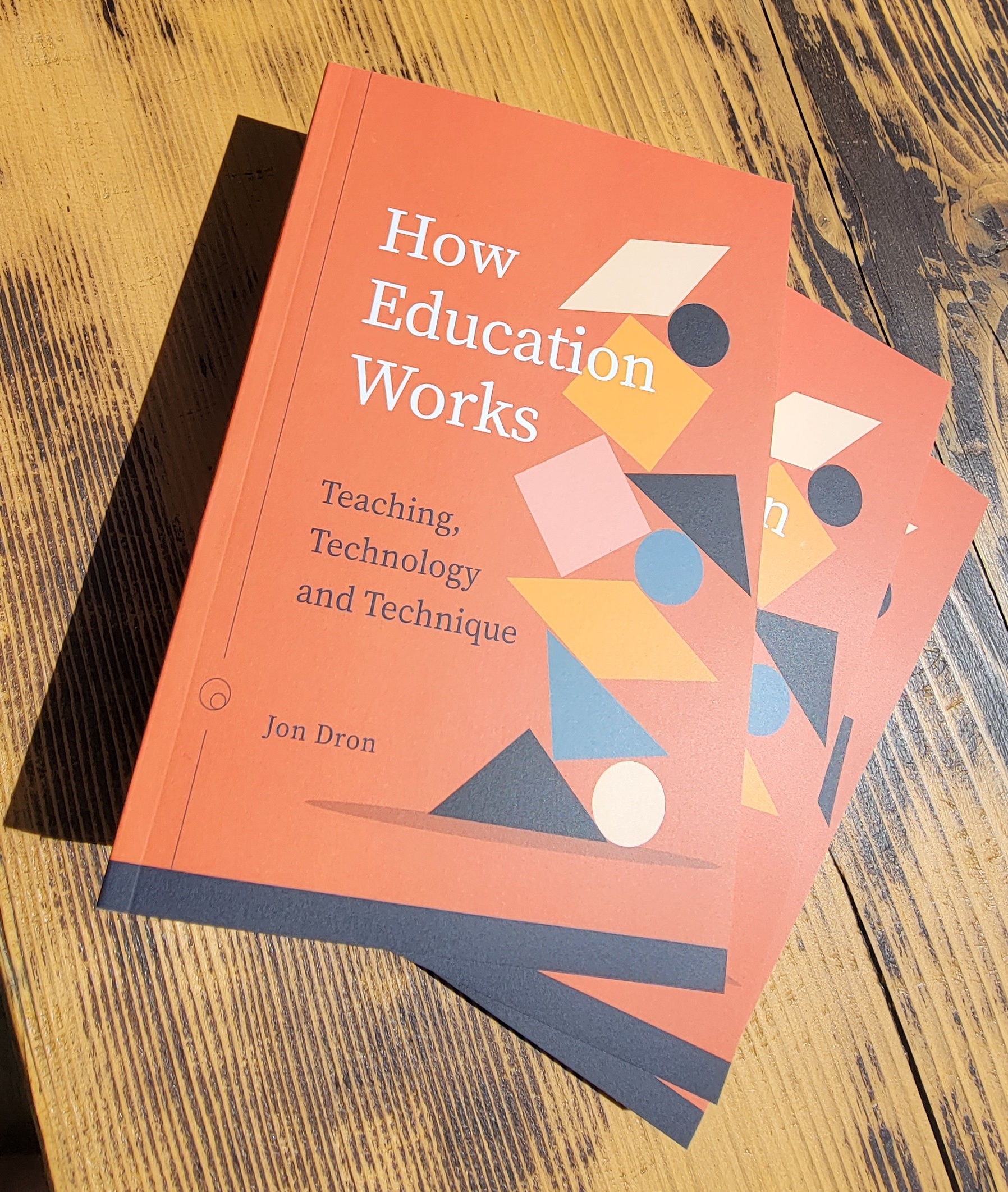Hard copies and e-book versions of How Education Works are now available, and they are starting to turn up in bookstores. The recommended retail price is CAD$40 but Amazon is selling the Kindle version for a bit less.
Here are a few outlets that are selling it (or order it from your local independent bookstore!):
AU Press (CA)
Barnes & Noble (US)
Blackwells (UK)
Amazon (CA)
Amazon (JP)
University of Chicago Press (US)
Indigo (CA)
Booktopia (AU)
For those wanting to try before they buy or who cannot afford/do not want the paper or e-book versions, you can read it for free online, or download a PDF of the whole book.
The publishers see this as mainly targeted at professional teachers and educational researchers, but those are far from the only audiences I had in mind as I was writing it. Apart from anything else, one of the central claims of the book is that literally everyone is a teacher. But it’s as much a book about the nature of technology as it is about education, and as much about the nature of knowledge as it is about how that knowledge is acquired. If you’re interested in how we come to know stuff, how technologies work, or how to think about what makes us (individually and collectively) smart, there’s something in the book for you. It’s a work of philosophy as much as it is a book of practical advice, and it’s about a way of thinking and being at least as much as it is about the formal practice of education. That said, it certainly does contain some ideas and recommendations that do have practical value for educators and educational researchers. There’s just more to it than that.
I cannot begin to express how pleased I am that, after more than 10 years of intermittent work, I finally have the finished article in my hands. I hope you get a chance to read it, in whatever format works for you! I’ll end this post with a quote, that happens to be the final paragraph of the book…
“If this book has helped you, however slightly, to think about what you know and how you have come to know it a little differently, then it has been a successful learning technology. In fact, even if you hold to all of your previous beliefs and this book has challenged you to defend them, then it has worked just fine too. Even if you disagreed with or misunderstood everything that I said, and even if you disliked the way that I presented it, it might still have been an effective learning technology, even though the learning that I hoped for did not come about. But I am not the one who matters the most here. This is layer upon layer of technology, and in some sense, for some technology, it has done what that technology should do. The book has conveyed words that, even if not understood as I intended them to be, even if not accepted, even if rabidly disagreed with, have done something for your learning. You are a different person now from the person you were when you started reading this book because everything that we do changes us. I do not know how it has changed you, but your mind is not the same as it was before, and ultimately the collectives in which you participate will not be the same either. The technology of print production, a spoken word, a pattern of pixels on a screen, or dots on a braille reader has, I hope, enabled you, at least on occasion, to think, criticize, acknowledge, recognize, synthesize, and react in ways that might have some value in consolidating or extending or even changing what you already know. As a result of bits and bytes flowing over an ether from my fingertips to whatever this page might be to you, knowledge (however obscure or counter to my intentions) has been created in the world, and learning has happened. For all the complexities and issues that emerge from that simple fact, one thing is absolutely certain: this is good.”


